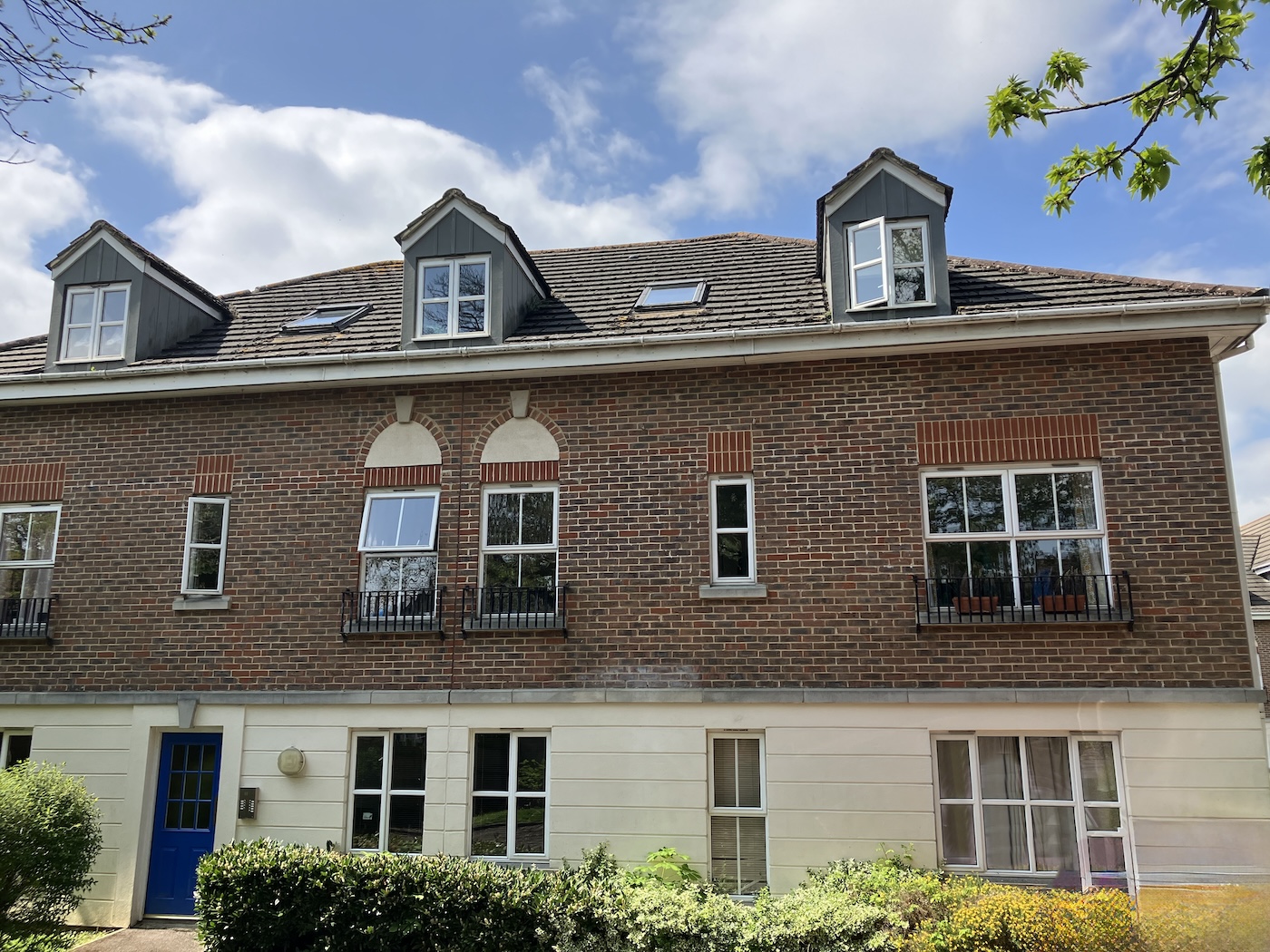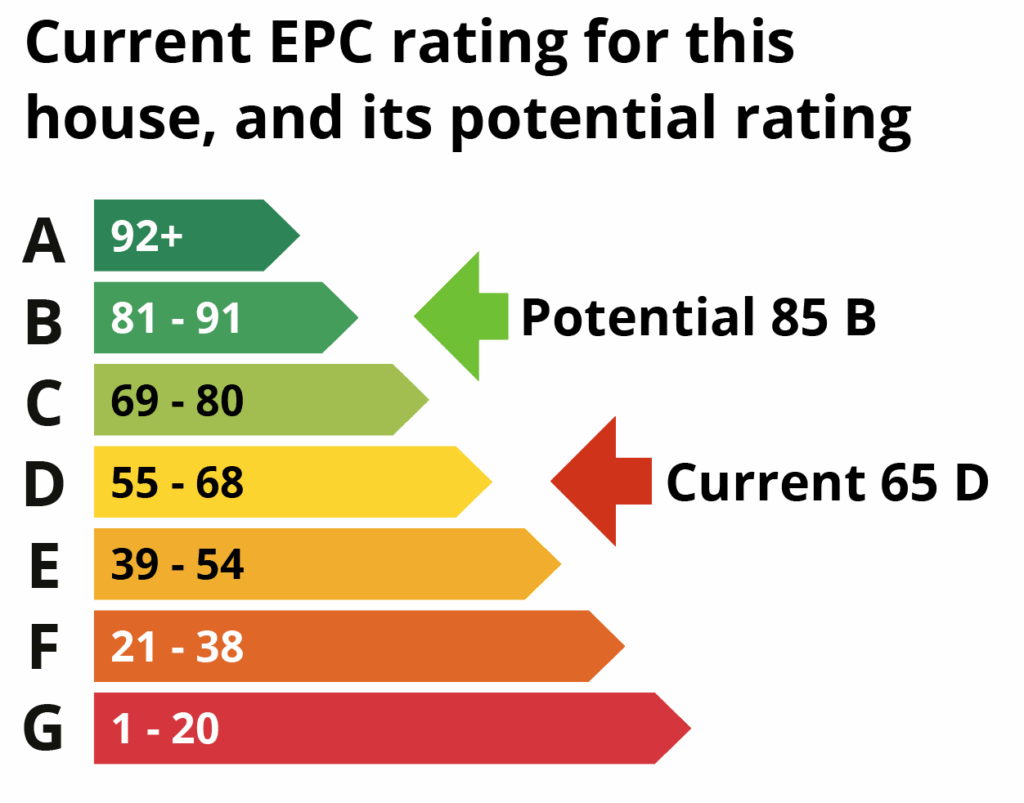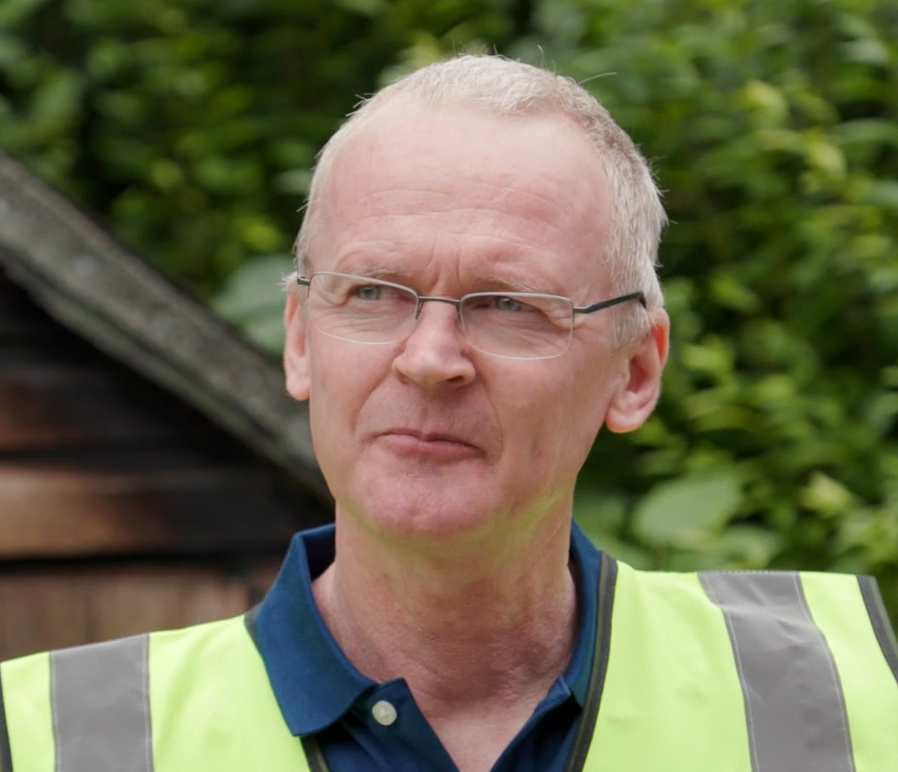
1990s rental flat, top floor
Could your rental property be made warmer, cheaper to run, and better for the planet? See what’s possible when you take a whole-home approach to planning energy upgrades.
What’s the potential of a rental property like this?
This 1990s top-floor flat in Don Bosco Close, Temple Cowley, Oxford, is typical of many purpose-built blocks. With timber-frame walls, rooms in the roof, and skylights, it faced high running costs and issues with heat loss.

The landlord wanted to make the flat more attractive to tenants by reducing bills and improving comfort. With a Whole House Plan, they could see how staged upgrades – from loft insulation to triple-glazed skylights and renewable energy – would transform performance. Find out more about smarter property upgrades for landlords ›
Here’s what the plan revealed:
| Carbon emissions could be cut by almost two-thirds |
| The EPC rating could rise from 65 D to 85 B |
| Annual fuel bills could fall from around £1,087 to just £547 |
You don’t have to carry out every measure at once. The Whole House Plan gives you a roadmap so you can make improvements in your own time, at your own pace, and within your budget.

“I rent mostly to young professionals, and I want the flat to be as appealing and energy-efficient as possible. People are increasingly aware of climate change, and with the flat being electrically heated, it can be expensive to run — so I’m keen to help lower energy bills for my tenants.”
Catherine, landlord, Temple Cowley, Oxford
Where this home stands now
House profile
| EPC rating | Current 65 D > Potential 85 B |
| Type | Top-floor flat |
| Built | 1990s |
| Location | Temple Cowley, Oxford |
| Occupancy | Tenanted |
| Bedrooms | 1 |
| Floor area | 55m² |
| Walls | Timber frame, rooms-in-roof |
| Floors | Timber, with flat below |
| Roof | Pitched with loft |
| Windows | Double glazed, with skylights |
| Annual energy use | 5,235 kWh (95 kWh/m²) |
| Carbon emissions | 0.7 tonnes CO2/year |
The EPC rating: now vs potential

An EPC rates your home’s energy efficiency – from A (best) to G (worst). A higher score can mean lower bills, but it doesn’t guarantee comfort. Whole-home upgrades help bridge that gap.
Long-term comfort, short-term disruption
| Key to tables: | Low impact: • | High impact: •••••• |
| Minor measures | Comfort & health | Disruption |
|---|---|---|
| Low energy lighting | ● | ● |
| Install insulated jacket to hot water tank | ● | ● |
| Insulate and draught-proof loft hatch | ● | ● |
| Increase communal loft insulation to 300mm | ●●●● | ●● |
| Insulate internal wall adjacent to stairwell | ●●●● | ●●● |
| New insulated front door | ●●●●● | ●● |
| Ventilation improvements | ●●●●●● | ●● |
| Major measures | Comfort & health | Disruption |
|---|---|---|
| Internal insulation to timber frame walls and sloping ceilings | ●●●● | ●●●●● |
| New triple glazed windows and skylights | ●●●●● | ●●●● |
| Air Source Heat Pump | ●●●●● | ●●●● |
| Measure | Comfort & health | Disruption |
|---|---|---|
| Solar PV | ● | ●● |
Expert tip

“For this system-built house, we’d recommend external wall insulation as the most effective method to make it warmer because much of the heat is lost through the steel-framed walls.
The hallway is particularly cold, so we’d recommend replacing the front door with a new insulated, draught-proofed one and making sure it’s properly installed.”
Geordie Stewart, Scheme Manager
The difference each step could make
These figures show how each recommended measure could affect the home’s EPC rating, energy bills, and carbon emissions – if installed in the order shown. They’re based on a full Whole House Plan tailored to this property.
| Measure | Est. cost | EPC | Fuel bill | CO₂/year |
|---|---|---|---|---|
| Where you are now | – | 65 D | £1,087 | 0.71 t |
| Loft insulation to 300mm | £2k–£2.5k | 70 C | £927 | 0.62 t |
| Ventilation upgrades | £1.5k–£2.5k | 70 C | £927 | 0.62 t |
| Internal wall insulation (timber frame/sloping ceilings) | £12.5k–£17.5k | 70 C | £919 | 0.62 t |
| Triple-glazed windows + skylights | £6.5k–£8.5k | 73 C | £821 | 0.56 t |
| New insulated front door | £2k–£3k | 73 C | £818 | 0.56 t |
| Air source heat pump (with new radiators and hot water tank) | £15.5k–£19.5k | 81 B | £653 | 0.31 t |
| Communal solar PV (4 kWp) | £1.5k–£2k (per flat) | 85 B | £547 | 0.25 t |
Boost your EPC rating
Installing a single major system like a heat pump or solar panels can still make a big difference. These examples show how individual upgrades could shift the home’s EPC and reduce carbon emissions – even before doing everything else.
| Upgrade option | EPC rating | Fuel bill | CO₂ emissions |
|---|---|---|---|
| Just solar PV | 73 C | £823 | 0.56 t |
| Just heat pump | 80 C | £696 | 0.33 t |
| Solar + heat pump | 84 B | £590 | 0.27 t |
Expert tip

“These 1950s houses are known for containing asbestos within their structural framework due to the period they were constructed.
Asbestos testing and specialist removal may need to be factored into the cost and sequencing of the improvements.”
Natasha Ginks, Retrofit Coordinator
Wondering what’s right for your property?
A Whole House Plan gives you expert, independent advice on the best steps to take – and in what order – so every upgrade works for you and your tenants.
Don’t put it off another year. Take the first step with a free consultation. Our team of experienced Retrofit Advisers will listen to your goals, help you understand what’s possible, and outline the best next steps – no pressure, no obligation.
Smarter home upgrades. Backed by trusted retrofit expertise.

A partnership project
A House Like Mine is an Oxford City Council initiative, delivered as part of the Zero Carbon Oxford Partnership (ZCOP) in collaboration with Cosy Homes Oxfordshire. The idea was first developed through case studies in Charlbury, and has since been expanded to show what’s possible for homes across Oxford and Oxfordshire.
It’s designed to help you take the first step towards making your home cosy, energy-efficient, and ready for the future. Step by step.
A House Like Mine was funded by the MCS Foundation, Oxfordshire County Council, Oxford City Council, and Lucy Group. The case studies are licensed under a Creative Commons BY-NC-ND 4.0 licence (creativecommons.org).

Prefer a PDF version?
Download a shareable PDF of this case study – perfect for your community group, local class, or anyone curious about improving home energy efficiency.
We’re making this resource freely available to raise awareness of how retrofitting – upgrading your home to use less energy and stay comfortable year-round – can make a real difference.
Click here to download the PDF
